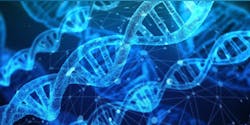Germline biomarker predicts side effects from anti-PD1/PDL1 checkpoint therapy
Investigators from UCLA Jonsson Comprehensive Cancer Center have identified a germline biomarker signature that successfully predicts which patients will suffer serious side effects that occur in up to three in 10 patients on anti-PD1/PDL1 therapy, a promising new approach to treating cancer, according to a release.
Checkpoint inhibitors that enhance the immune system against PD-1 and PD-L1 show great promise, having substantially improved the prognosis for patients with several advanced cancers, including melanoma, renal cell carcinoma, non-small cell lung cancer, Hodgkin lymphoma, and head and neck cancer.
As promising as they are, these therapies are also associated with a unique set of side effects, called immune-related adverse events (irAEs), believed to be the result of an immune system overstimulated by the therapy. While these side effects are generally treatable, they can in rare cases be very serious, even fatal. In addition, there’s currently no way to predict which patients will develop irAEs before starting treatment, requiring clinicians to watch and wait after treatment begins. Notably, the toxicity from checkpoint therapy does not appear to be associated with a patient’s cancer or their response to the treatment, supporting the idea that it is a patient-specific reaction.
With a growing need to identify which patients are at risk for irAEs, investigators led by Joanne B. Weidhaas, MD, PhD, MSM, of UCLA Jonsson Comprehensive Cancer Center and vice chair, Department of Radiation Oncology, Director, Division of Molecular and Cellular Oncology at UCLA Health, examined DNA signatures in 99 patients, looking for patterns that would indicate if inherited DNA biomarkers would predict toxicity. In findings published in Journal for ImmunoTherapy of Cancer, they report that they were able to identify a biomarker panel that predicts toxicity with 80% accuracy.
The authors of the study say applying these findings may improve clinicians’ ability to offer truly personalized cancer therapy by enabling consideration of toxicity along with other data that can predict patients’ response to treatment. “As the efficacy of cancer therapy improves, resulting in higher and higher rates of long-term cancer control,” they write, “cure without harm will only become an increasingly important endpoint.”

